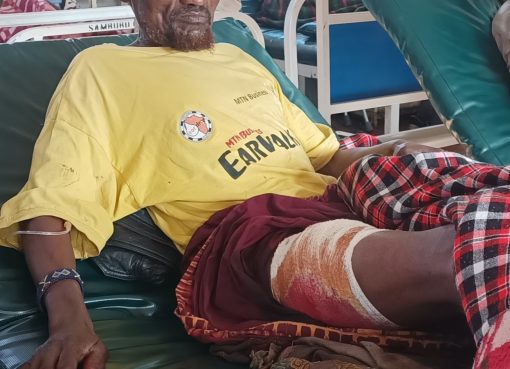The Government paid out Sh68, 340, 300 two years ago for various damages to victims of wildlife conflicts in Marsabit County.
Through the Kenya Wildlife Service (KWS), the government with the support from the French Development Agency (AFD), also gave support to 1,000 households in the County in a Programme aimed at improving climate and biodiversity protection.
KWS Senior Assistant Director-In-Charge of the Northern conservation area, John Wambua, said the payment emanated from 602 cases of human injury, death, crop damage, livestock predation and damage to property caused by wildlife outside the protected areas of habitation between 2016 and 2020.
Mr Wambua said another 600 cases were being processed after the County Wildlife Conservation and Compensation Committee (CWCCC) chaired by the county commissioner reviewed and recommended that the claims lodged be compensated.
However, the Director said they have only managed to trace 400 cases as the other 200 cannot be found as their telephone numbers are no longer active.
Mr Wambua said chiefs who have been tasked to trace the victims or their next of kin have not been able to locate them after drought disrupted their settlements.
“The chiefs and their assistants are assisting us to trace the remaining number so that their payments can be processed,” he said, adding that the current drought has interfered with the lives of the pastoralist communities forcing them to move out of their confined areas in search of grazing resources.
Snakes, elephants, leopards, lions and hyenas are cited as the main species causing conflict in Marsabit County.
The drought which has led to the deaths of thousands of livestock belonging to the local communities has also adversely affected wildlife in the conservation area. The prolonged dry spell has allegedly killed four gravy zebras in Marsabit, 14 reticulated giraffes in Wajir County, while four wild pigs and one errand have also died in Mandera County.
The Director said the wild animals succumbed to starvation as water and pasture increasingly depleted due to competition from livestock.
He expressed concern that the survival of antelopes and gazelles which are abundant in the Chalbi desert belt of Kargi and North Horr was under threat as their body condition was very poor.
The three-year dry spell has led to the depletion of vegetation exposing the soil to massive wind erosion which may stifle regeneration of pasture when rains fall.
The service through the AFD programme extended support to vulnerable households through the donation of 6-kilogram cooking gas cylinders with gas and a similar number of solar lights as the government made alternatives to firewood in order to ease pressure on the forests.
The socio economic programme aimed at transforming the lives of the local communities who play a great role in the conservation of wildlife.
The target households were also helped to start bee keeping ventures where 4,000 bee hives were provided to form a source of income to enable the beneficiaries to generate money to refill the gas cylinders.
Other interventions under the AFD programme included provision of water tanks, energy saving jikos and dam liners with money maker water pumps to support small scale irrigation.
However, Mr Wambua regretted that beneficiaries were pushed back to the use of firewood and charcoal because the price of liquefied gas is prohibitively high after it rose from Sh600 to the current Sh1500 per 6 kg cylinder.
He called for a multi-sectoral approach to work out ways of availing clean sources of energy to the local communities in order to ease pressure on forests.
While advising against felling of trees the director cautioned herders who have moved into Mount Marsabit forest with their livestock to consider retreating to their grazing fields which have lately received some rains.
By Sebastian Miriti





